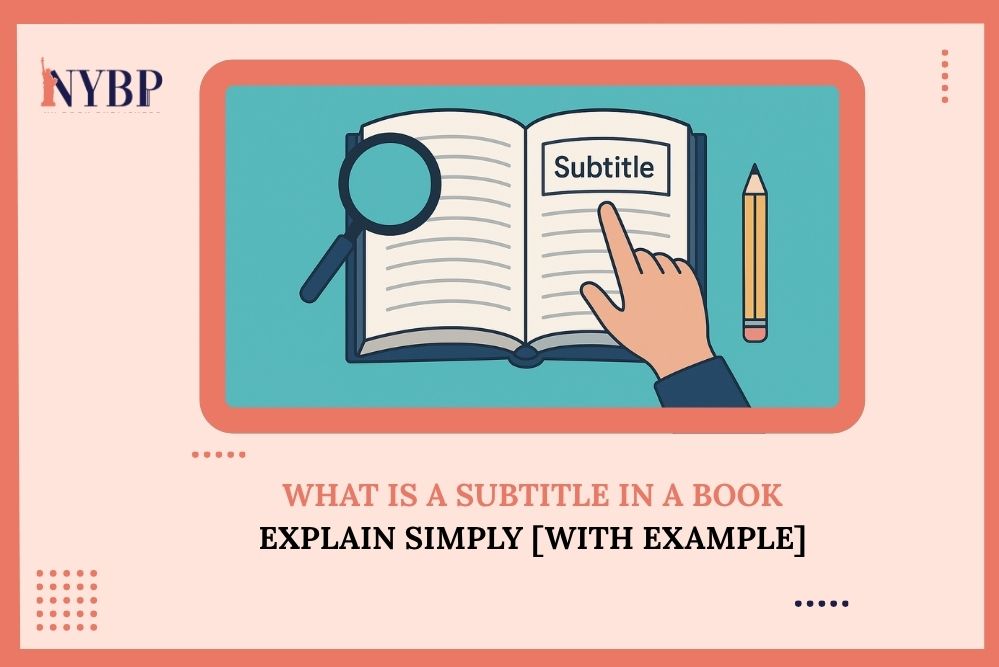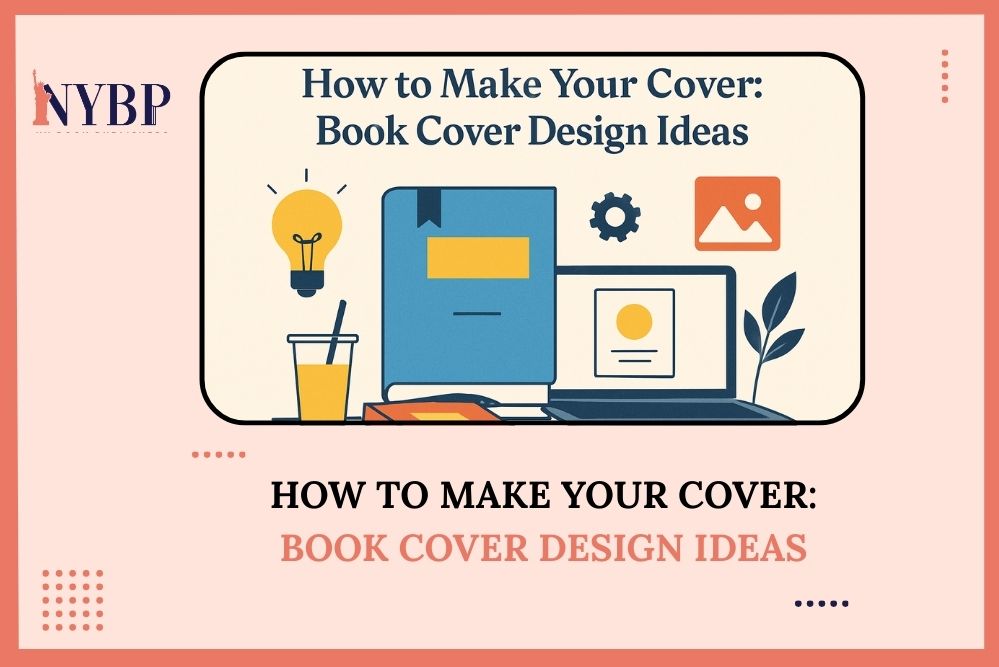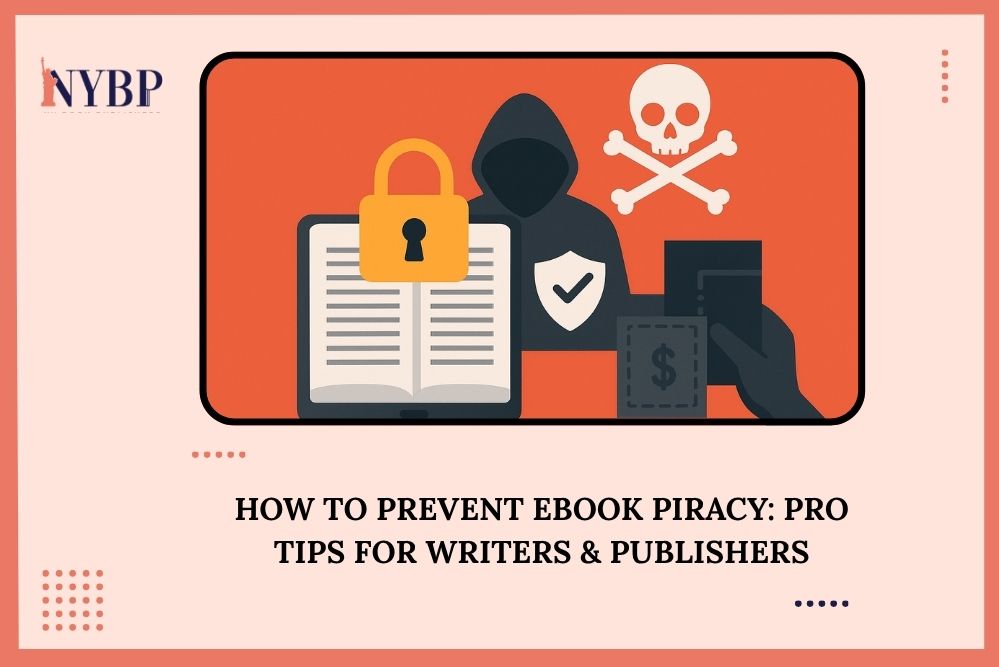Overview
Have you ever come across a book title that made you stop and think, “Hmm, I want to know more!” Chances are, that book had a subtitle. Subtitles might look small, but they do a big job; they tell readers what your book is really about. If you’re new to writing or publishing, you might be wondering, “What is a subtitle in a book?” and why does it matter so much? Don’t worry, we’ll break it down in simple words, with clear examples and easy tips you can use for your own book.
By the end of this guide, you’ll know how titles and subtitles work together, how to write one that grabs attention, and how NY Book Publishers can help you choose one that sells. Let’s get started!
What Is A Subtitle In A Book?
So, what exactly is a subtitle in a book? In the simplest terms, a subtitle is the line that comes right after your main title. It adds extra meaning or context to your book’s subject.
If the title is your hook, the first thing that makes readers look is the subtitle, which works like your promise. It tells them what they’ll get when they open your book.
For example:
Atomic Habits: An Easy & Proven Way to Build Good Habits and Break Bad Ones
Here, “Atomic Habits” is the title. It’s catchy and intriguing. But what does it mean? The subtitle explains it perfectly; it tells readers this is a practical guide about building better habits. That’s the beauty of subtitles. They make your title clear, powerful, and reader-friendly.

What’s a Subtitle and Why It Matters
You might think subtitles are optional, but they can make a huge difference in how readers see your book. A good subtitle gives your title direction. It adds clarity, emotion, and curiosity — all at once.
For example:
- The Subtle Art of Not Giving a Fck: A Counterintuitive Approach to Living a Good Life*
- Becoming: A Memoir
- Educated: A Memoir
Without the subtitles, these titles could mean almost anything. But with them, they become specific and memorable. Subtitles help readers know exactly what kind of book they’re picking up: fiction, memoir, self-help, or something else.
Think of subtitles as your book’s GPS. They guide readers straight to what they’re looking for.

Title and Subtitle — What’s the Difference?
A lot of new authors mix up the two. So, let’s make it simple.
- The Title is your main headline. It grabs attention and sparks curiosity.
- The Subtitle is your explanation. It gives a hint of what the book delivers.
Here’s an easy example:
The 5 AM Club: Own Your Morning. Elevate Your Life.
The title (The 5 AM Club) sets a scene. The subtitle (Own Your Morning. Elevate Your Life.) tells the reader the book is about productivity and self-improvement. They work together like a team; one attracts attention, the other builds trust.
Where Is the Subtitle in a Book?
The subtitle usually appears right below the title on the book cover, in smaller text. You’ll also see it listed:
- On the title page inside the book
- In the metadata, when book publishing platforms like Amazon KDP
- In marketing materials, ads, and book descriptions
It’s always displayed close to the title, so readers can easily connect the two.
Books with Subtitles — Real Examples
Let’s look at some real-life examples of books with subtitles that nailed it:
- Quiet: The Power of Introverts in a World That Can’t Stop Talking — Susan Cain
- Big Magic: Creative Living Beyond Fear — Elizabeth Gilbert
- The Happiness Project: Or, Why I Spent a Year Trying to Sing in the Morning, Clean My Closets, Fight Right, Read Aristotle, and Generally Have More Fun — Gretchen Rubin
- You Are a Badass: How to Stop Doubting Your Greatness and Start Living an Awesome Life — Jen Sincero
See how each subtitle explains the book’s theme in a fun, engaging way? That’s exactly how you want yours to feel: clear and catchy.
Why Subtitles Are Important for Your Book
You might think that only nonfiction books need subtitles, but that’s not true at all. Subtitles can strengthen any book, fiction, memoir, or self-help, because they add depth and clarity. A well-thought-out subtitle tells readers what your book is really about before they even turn the first page. Here’s why it matters so much:
-
They Clarify Your Topic
Your subtitle helps readers understand your book at a glance. While your main title catches their eye, your subtitle fills in the details. It answers the question, “What will I learn or experience from this book?”
For instance, Quiet: The Power of Introverts in a World That Can’t Stop Talking instantly tells readers that it’s not just about personality types — it’s about thriving as an introvert in a noisy world. That clarity helps readers know they’ve found the right book for them.
-
They Improve Discoverability
In today’s digital marketplace, your subtitle can make or break how easily your book is found online. Platforms like Amazon use subtitles in search results, so including keywords or phrases related to your topic boosts visibility.
For example, if you’re writing a health book, a subtitle like A Simple Guide to Healthy Living and Lasting Energy includes words readers actually type into search bars. It’s not just about creativity — it’s also about being smart with search terms.
-
They Increase Credibility
A strong subtitle gives your book a polished, professional touch. It shows readers that you’ve put real thought into what your book offers. It also signals expertise — that you know your subject well enough to summarize it clearly and confidently.
Think about it: The 7 Habits of Highly Effective People: Powerful Lessons in Personal Change wouldn’t sound nearly as credible without that informative subtitle. It adds authority and purpose to the title.
-
They Make Your Book Memorable
A catchy subtitle can stick in readers’ minds long after they’ve seen your cover. When readers talk about your book, they might not always remember your exact title — but a great subtitle gives them something to recall and recommend.
It’s what turns Eat, Pray, Love from a simple phrase into a memorable journey once paired with One Woman’s Search for Everything Across Italy, India, and Indonesia. That’s the magic of a well-written subtitle; it helps your book live longer in readers’ memories.

How to Write a Subtitle That Works
Now that you understand how powerful subtitles can be, let’s talk about how to create one that actually works. A good subtitle doesn’t just describe your book; it connects with your audience and sparks curiosity. Here are some practical tips to help you come up with one that fits perfectly:
-
Make It Clear and Specific
Your subtitle should instantly tell readers what your book is about. Avoid vague or fancy wording that hides your main message. Specificity builds trust.
For example, compare these two:
- A Guide to Happiness — vague and generic.
- Simple Habits for a Happier, Calmer Life — clear and relatable.
The second one tells readers exactly what they’ll get, making it far more inviting.
-
Use Action Words
Action words add energy to your subtitle and make it feel alive. They motivate readers and give a sense of transformation. Instead of writing A Guide to Confidence, say How to Build Unshakable Confidence Every Day.
Active phrases like discover, transform, build, and unlock make readers feel like they’re about to gain something valuable, and that’s exactly the feeling you want to create.
-
Keep It Short and Punchy
Subtitles don’t need to be long to be powerful. In fact, shorter ones are usually more memorable and look better on a book cover design. Try to keep it under 10–12 words.
Readers should be able to read and understand your subtitle at a glance. If you find yourself using commas or multiple clauses, try trimming it down to the most important message.
-
Use Relevant Keywords
Your subtitle is also your book’s secret SEO weapon. Adding keywords, the phrases people use when searching online, helps your book show up in search results.
For instance, if your book is about personal finance, a subtitle like Smart Strategies for Saving, Investing, and Building Wealth naturally includes search-friendly terms. Just make sure the keywords fit naturally and don’t feel forced.
-
Match the Tone of Your Title
Your subtitle should sound like it belongs with your title. If your title is lighthearted or playful, don’t pair it with a stiff or overly formal subtitle. The tone needs to match your book’s personality.
For example:
- Love in the Rain: A Heartwarming Contemporary Romance feels soft and emotional — perfect for a romance novel.
- Mind Over Money: The Psychology of Financial Success feels informative and professional — great for nonfiction.
When your title and subtitle complement each other, your book feels cohesive, appealing, and professional.
Title and Subtitle Examples by Genre
Let’s explore how titles and subtitles work together across different genres.
Nonfiction Example
Title: Deep Work
Subtitle: Rules for Focused Success in a Distracted World
This combo perfectly explains what the book teaches and why it matters.
Romance Example
Title: Love in the Rain
Subtitle: A Heartwarming Second-Chance Romance
The subtitle tells readers the tone and type of story to expect.
Thriller Example
Title: The Silent Witness
Subtitle: A Detective Harper Mystery
It sets up the genre and main character instantly.
Self-Help Example
Title: The Productivity Blueprint
Subtitle: Simple Habits to Transform Work and Life
Readers immediately know the benefit they’ll get.
Good subtitles work hand in hand with your title to make your book stand out.
Subtitle Ideas for Inspiration
Here are some subtitle ideas to help you brainstorm:
- How to Build Confidence That Lasts
- A True Story of Love, Loss, and Finding Strength
- Lessons for Modern Leaders from Ancient Wisdom
- Your Guide to Mindful Living in a Busy World
- Secrets Every New Writer Should Know
Try mixing descriptive and emotional phrases until you find one that fits your story’s purpose.
What Is an Example of a Subtitle?
Let’s look at a real subtitle example in context:
Daring Greatly: How the Courage to Be Vulnerable Transforms the Way We Live, Love, Parent, and Lead
This subtitle does three things right:
- It clearly explains what the book is about.
- It uses emotional words like courage and vulnerable.
- It connects directly with the reader’s personal growth.
When your subtitle can do all that, you know you’ve got a winner.
How NY Book Publishers Can Help You Create the Perfect Subtitle
At NY Book Publishers, we know that writing the book is only half the journey. Finding the right title and subtitle is what helps your story shine.
Our team works closely with authors to understand their message, audience, and goals. We help you brainstorm, test, and finalize a subtitle that boosts your book’s appeal and market reach. But we don’t stop there. We handle everything from editing and cover design to publishing and marketing. Whether you’re writing fiction, nonfiction, or a memoir, we’ll make sure your book is polished, professional, and ready for readers.
With us by your side, you can skip the stress and focus on what matters most, telling your story.
Your Subtitle, Your Promise to Readers
Your subtitle is more than just a line under the title. It’s your promise to readers, the clear message that says, “This is what my book will give you.” A strong subtitle can turn a good title into a great one, helping your book stand out in crowded marketplaces. So, take your time, brainstorm ideas, and make sure it reflects your story perfectly. Remember, if you ever need help with choosing the right title, subtitle, or even getting your book published, NY Book Publishers is here to make it happen.
Because every book deserves a title and a subtitle that readers remember.
Frequently Asked Questions
-
What is a subtitle in a book example?
A subtitle is the line after the title that explains what the book is about. Example: Atomic Habits: An Easy & Proven Way to Build Good Habits and Break Bad Ones.
-
What is the difference between a book title and a subtitle?
The title grabs attention; the subtitle clarifies the subject and adds meaning.
-
Where is the subtitle in a book?
It’s usually placed right below the title on the cover and title page.
-
Does every book have a subtitle?
No. Many fiction books don’t use subtitles, but nonfiction and self-help books often do.
-
What is a good subtitle for a book?
A good subtitle is clear, short, and emotional. It tells readers what they’ll gain by reading your book.





